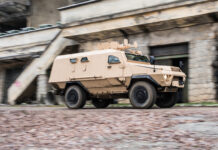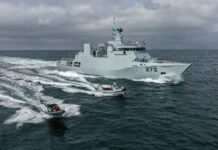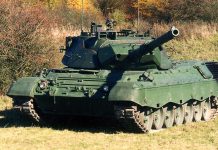Hundreds of Offshore Patrol Vessels (OPVs) are already widely operated worldwide, and more than 200 will be launched in the coming years. These small vessels now form the backbone of many countries’ coastal maritime operations, protecting against various threats, including terrorism, smuggling, drug and human trafficking, illegal fishing, and illegal immigration.
The roles taken up by OPVs are highly varied – alongside the aforementioned tasks, they also play a key role in search and rescue, environmental protection and securing critical maritime infrastructure such as offshore oil rigs. They patrol from the Arctic regions to the vastness of the Pacific Ocean, particularly in exclusive economic zones (EEZs). Shipyards compete to improve the capabilities of their ships, concentrating a maximum amount of equipment on platforms with limited space available. This article looks at OPVs ranging from the smaller end at 500 tonnes to significantly larger vessels over 2,500 tonnes.

OPV Characteristics in 2023
Current patrol vessels have evolved to increase their capabilities and scope of missions. Offshore service (supply) vessels, renowned for their robustness and endurance, have inspired modern designs; some hulls have been designed to obtain better performance at low speeds, which reduces the wake, eddies, and vertical acceleration on the rear. French shipyard Kership adopted C-SHARP (Combined-Speeds Hull with All-Round Performances), an innovative hull design developed with the Nantes Research Laboratory in Hydrodynamics, Energetics and Atmospheric Environment (LHEEA); C-SHARP offers high performance at both high and low speeds.
In terms of weaponry, this varies depending on the OPV’s intended use. While some patrol vessels have only light armaments, others have a 76 mm gun. The lightest vessels are equipped with 20 mm and 30 mm remote weapon stations (RWSs). In this category, we can mention Leonardo’s Lionfish 20 mm RWS with 250 ready to fire rounds and the Oerlikon KAE cannon, which has a cyclic rate of fire of 1,000 rds/min and an effective range of up to 2,000 m.
Nexter/KNDS markets the NARWHAL (NAval Remote Weapon, Highly Accurate, Lightweight) incorporating the Nexter M621 chambered in 20 × 102 mm, or the more powerful M693 which is chambered in 20 × 139 mm and has an effective range of approximately 1,500 m. The US uses the Mk44 Bushmaster II 30 mm automatic cannon, and is now offered on various stabilised RWSs, including the Aselsan SMASH. The lighter units suit 12.7 mm solutions such as the Belgian Sea Defender, Swedish Trackfire and Israeli Wave 350 from Elbit Systems. This type of weapon is appropriate for most operations.

OPVs can also carry anti-ship missiles such as the MM40 Block 3 Exocet or the RGM-84L Harpoon. Philippine Navy ships receive the Korean-built SSM-700K C-Star missile with a maximum range of 180 km. The Senegalese Navy’s three Walo class (OPV 58 S) vessels will receive the MARTE Mk2/N missile from MBDA, a light missile weighing 310 kg with a range greater than 30 km. Another possibility is to mount the Brimstone maritime missile, which weighs only 50 kg, and range is understood to be approximately 12 km for the Brimstone 3B variant when surface-launched. All OPVs have one or more Rigid Hulled Inflatable Boat (RHIB), allowing for onboard inspection teams, thereby accelerating their action when necessary. Most have a rear ramp for quick boat deployment while another RHIB is commonly positioned under the davit on the deck.
Most OPVs implement aerial and maritime surveillance drones. Here we can mention the SMDM mini-drone capable of operating within a limited range of 50 km, in service with the French Navy. On its River class, the Royal Navy deploys the Puma 3 AE drone, which is 1.4 m long, has a wingspan of 2.8 m, and can fly for two hours. Some OPVs accommodate helicopters such as the AS.365 Dauphin, Seahawk and NH90. The majority can perform a vertical replenishment, or VERTREP, to bring supplies or conduct medical evacuations.
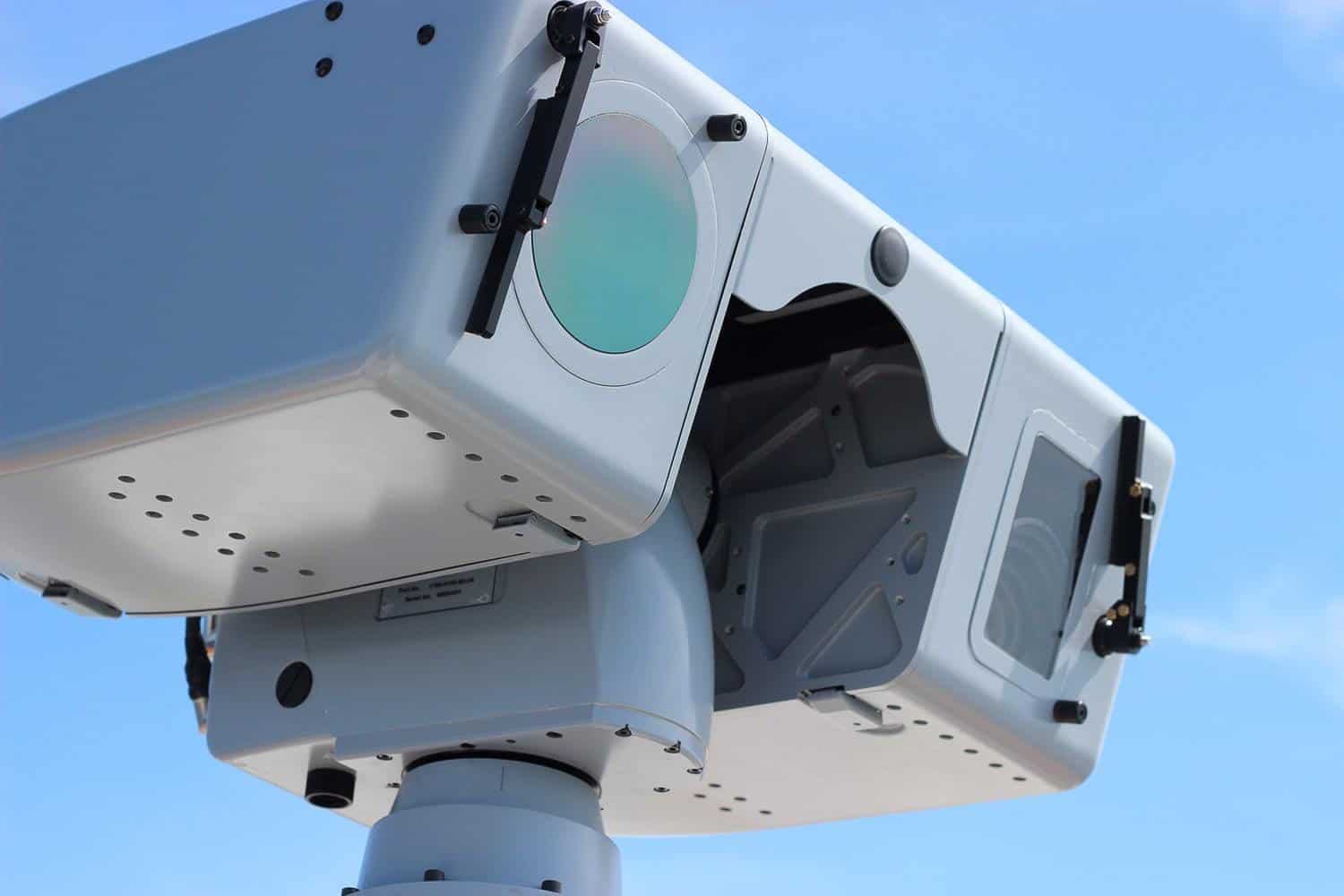
Some OPVs have surface-to-air defences, such as the VL Mica missiles, installed on the OPV Al Shamikh of the Royal Navy of Oman. Pakistan is willing to acquire the RIM-116 surface-to-air missile for its new OPV from Damen shipyard. Vessels are fitted with navigation radars, marine and air surveillance. Multiple models, such as the Kelvin Hughes Mk11 SharpEye air and surface surveillance radar, are available on the market. Thales offers the NS50 with associated air/surface surveillance and fire control functionalities. The Dutch Navy’s OPV Holland was the first to receive the Thales integrated mast IM 400, incorporating the Thales Sea Watcher 100, and Sea Master 400 radars, as well as observation and communication systems.
Terma’s Scanter 6000 radar is also widely deployed for new-generation OPVs, which are all equipped with optronic turrets. We can also mention the installation of a three-sensor gyroscopically stabilised optronic system Argos-15HD on certain units or the Sea Eagle optronic system from US company Liteye or Gatekeeper from Thales. Most are equipped with an information management system and Link-11 and Link-22 data link systems for NATO countries. The 12 Australian Arafura class vessels will receive an iXblue Inertial Navigation System (INS), providing them with highly accurate and reliable navigation capabilities in all environments, including within Global Navigation Satellite System (GNSS)-denied operational areas.
Current Acquisition Programmes
Demand is strong for OPVs and there is an increasingly diversified offer. If Western navies lightly arm their OPVs because they have frigates and destroyers, emerging countries’ navies tend to equip them more robustly because they constitute their main naval assets. Nevertheless, the broad trend is toward increasing the size of patrol vessels to take on a wider range of missions.

Strong Demand in the Gulf of Guinea
African countries have long neglected the protection of their maritime access and their EEZ. That lack of investment has enabled the development of maritime piracy and illegal, unreported, and unregulated (IUU) fishing. Recently, countries in the Gulf of Guinea have been acquiring new units. Even if the units remain modest because of ownership costs, there is an increase in their size and their capacities. In North Africa, the Royal Moroccan Navy ordered the Avante 1800 Patrol from Navantia. The vessel is 89 m long, 13.3 m wide, with a complement of 46. The ship will receive a 76 mm gun, a missile launcher, modern sensors, and radars and can accommodate a helicopter. The country already operates five OPV 64 vessels and one OPV 70 built by STX and Raidco Marine.
The Piriou shipyard in Concarneau delivered the Walo to the Senegalese Navy on 2 June 2023. This is the first of three missile patrol vessels ordered in 2019 from the French manufacturer. This 62.2-m-long ship with a draft of about 3 m will be the most heavily armed of the Senegalese vessels with a 76 mm OTO-Melara turret and two remotely operated guns. The Polaris mission system from Naval Group will manage all armament and sensors. The OPV 58S will be able to implement aerial or underwater drones suitable for deploying commandos, including combat swimmers.
The country also has the OPV Fouladou made by manufacturer OCEA. It is the largest aluminium OPV in Europe, 58 m long and 9.4 m wide. The platform’s stability and noise levels are excellent, even without including its pair of Naiad Dynamics fin stabilisers. No less than 27 shapes of hulls have been evaluated to find the best design. In addition to its navigation and surveillance radars, the Fouladou is equipped with a Vigy observer optronic system in its mast. It has a RWS from MSI Defence Systems armed with a 30 mm cannon installed on the foredeck. The ship has FRSQ 700-type aluminium-hulled RHIBs, which can exceed 35 kn and carry about 15 people.
The Ivory Coast has also significantly strengthened its fleet by acquiring the RPB 33-type OPV. Ufast shipyard in Quimper built the Ivorian units based on a design provided by Camarc Design, a small British company. With a composite hull 33 m in length, these OPVs have a 6 m RHIB, and can be armed with a 20 mm cannon and two 12.7 mm machine guns. In March 2023, Ivory Coast received the high seas OPV 45 type patrol vessel Espérance (46.7 m long and 8 m wide), manufactured in Israel. This ship is armed with a Rafael Typhoon weapon station, which is understood to be equipped with a 30 mm automatic cannon, and two 12.7 mm machine guns. The vessel has a crew of 32 and range of 3,500 NM at 12 kn (22 km/h).
On 17 June, the Ghana Navy took delivery of two ex-US Coast Guard Marine Protector patrol boats supplied by the US. The Marine Protector class is 27 m long, with a displacement of over 90 tonnes. Two MTU diesel engines provide a top speed of 25 kn (46 km/h), providing a range of 1,700 km (and the capability to remain operational for up to three days). Nigeria, long decried for its maritime inaction, has strengthened its intervention capacities. We can mention the acquisition of several 32 m Ocea FPB 98 MKI vessels. On 6 June 2023 in Abuja, a contract signing ceremony was held between the Nigerian Navy and Turkey’s Dearsan Shipyard to construct a new 57-m Tuzla class patrol ship. South Africa is building four units of the Damen-6211 type, which constitutes the Warrior class, to improve control of its maritime borders.
A Dynamic European Market
Several European countries have plans to equip or renew their patrol ships, including France, Portugal, and Denmark. The French Navy participates in two OPV programmes; these are for six Patrouilleurs Outremer (POM) of which two will be based in New Caledonia, two in French Polynesia and two in the island of Reunion. The last of these six POM ships should be delivered at the end of 2025. French company Mauric designed the ship and Socarenam ensured the construction in Saint-Malo and then in Boulogne-sur-Mer.
The vessels have a steel hull and aluminium superstructure measuring 79.9 m in length and 11.8 m wide, with a draft of 3.5 m.
The new patrol vessels, which can move with a full load of 1,298 tonnes, are equipped with a passive stabilisation system comprising two water tanks on the deck, just in front of the gangway. They have a maximum speed of 24 kn and can operate without refuelling for 30 days. From 0 to 12 kn, they use only electric propulsion, after which the two main diesel engines are employed from speeds of 12 to 22 kn, with diesel and electric propulsion combined to reach 24 kn. The armament consists of a Nexter’s NARWHAL and an optronic solution supplied by Exavision. The POM can operate the Navy’s Mini Aerial Drone System (SMDM) to expand its surveillance and identification capabilities.
The Aliaca is a light fixed-wing tactical drone developed by French company SURVEY Copter, a subsidiary of Airbus. The drone is 2.2 m long with a 3.6 m wingspan, and weighs only 16 kg. The Aliaca fields a TV/IR camera (with ×30 zoom) and an Automatic Identification System (AIS) receiver.

The 2024-2030 military programming law foresees the construction of ten patrouilleurs hauturiers (PH) to replace the D’Estienne d’Orves class (Type A69 Aviso) and three OPVs. Seven will be delivered between 2024 and 2030 and three more between 2030 and 20357. The DGA notified Naval Group in October 2021 of the contract relating to the preliminary and detailed design of the ships. Piriou, CMN and Socarenam will secure the construction together in a consortium.
The main armament will consist of the RapidFire RWS, developed by Nexter and Thales, and armed with a 40 mm CTAS cannon. The vessels will be equipped with up to three RHIBs, should be able to reach 22 kn (41 km/h), with a 40-day autonomy, while being able to navigate 5,500 NM at an economical pace. An NS54 radar and a BlueWatcher hull sonar will equip the PH, and Naval Group will provide the combat system.
Portuguese shipyards are building a second series of six Viana do Castelo OPVs, while four are already in service. The new units will join the Portuguese Navy between 2026 and 2030. The ship has a 30 mm cannon, two RHIBs and can operate a Super Lynx MK95 helicopter. The ships operate unmanned systems, a single Sagem SA Vigy 10 MKIII naval surveillance and observation platform, three water cannons, and two rigid inflatable boats.
The United Kingdom is also a manufacturer of military vessels including OPVs. BAE systems was involved in the River or the Khareef class for Oman. HMS Spey is the fifth in the series and entered service in June 2019. BAE Systems in Glasgow built all the vessels belonging to Batch 2 (the ships Forth, Medway, Trent, Tamar, and Spey). Babcock International has a portfolio of class-leading inshore patrol vessels (50 m long) and OPVs (90 m long). A few years ago, the company delivered four patrol vessels for the Irish Naval Service, based on a Vard Marine Inc. (formerly STX Marine) design.
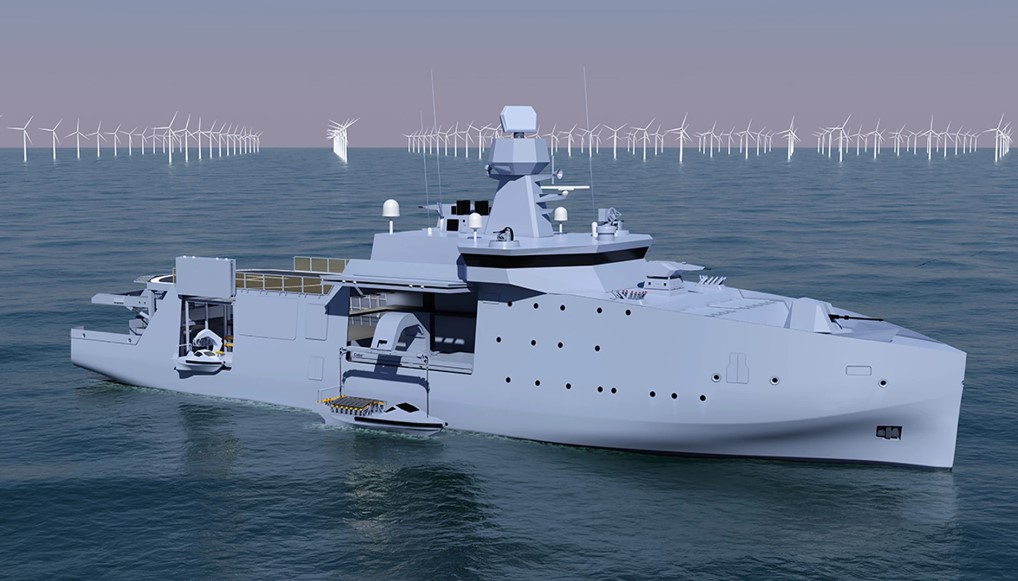
Denmark has just launched a programme to acquire new patrol vessels with the configuration still needing to be finalised. Danske Patruljeskibe K/S – a consortium founded by Terma, Odense Maritime Technology and PensionDanmark – leads the project. Seven European states, along with two observers are involved in the European Patrol Corvette (EPC) programme, which aims to develop new missile corvettes and OPVs. It is possible that the change in strategic context will have an impact on the development of this programme. Turkey will soon launch the TCG Akhisar (P-1220), which is the first of ten Hisar class OPVs. These vessels are derived from the MILGEN corvette, but are streamlined to be made faster and cheaper.
Bright Prospects in Asia-Oceania
Demand is high in the Indo-Pacific region. Dutch shipyard Damen supplied the Pakistan Navy with the PNS Yarmook, built in Galati (Romania) and commissioned in February 2020. The vessel is based on the Damen OPV 1900 design and features an overall length of 91.3 m, a beam of 14.4 m, and a hull draft of 4 m. The patrol ship will be equipped with the CM-302 supersonic anti-ship cruise missile (ASCM).
The Philippine Navy (PN) is strengthening its capabilities to face China and in this regard, the Philippines Department of National Defence (DND) has signed a contract with Hyundai Heavy Industries (HHI) to construct and deliver six new OPVs. The ship has a length of 81 m, a beam of 13.1 m, a draft of 3.5 m, and a maximum speed of 21 kn. It also is armed with a 76 mm main gun, a remote-controlled weapon station carrying a 30 mm secondary gun, and two MBDA Simbad-RC launchers for the Mistral missile family.

Australia has launched an extensive procurement programme to replace existing Armidale class and Cape class patrol ships. German shipyard Lürssen’s OPV 80 gained the contract after a lengthy process to form the Arafura class, which is 80 m long and has a maximum speed of 20 kn. The first two vessels are already under construction by Lürssen Australia and ASC in Adelaide. Lürssen Australia and Civmec will build the remaining ten vessels in Henderson, Western Australia. The Royal Australian Navy (RAN) is in talks to procure a containerised variant of Rafael’s C-Dome to increase the firepower of its future OPV.
China produces different models of OPVs which are mainly operated by the Chinese Coast Guard. The country sold this type of patrol boat for military use in African countries – for instance Nigeria operates two P18N type OPVs.
Sustained Demand in South America
Countries in South America are also keen on patrol ships, which are often heavily armed. The Mexican Navy has many patrol vessels and in 2020, it commissioned the long-range OPV, ARM Reformador. Renamed Benito Juárez, the ship is based on the Damen shipyard’s SIGMA 10514 design, displacing 2,570 tonnes, with a length of 105.1 m, a beam of 14 m, and a draft of 3.7 m. Reformador has Thales’ Tacticos combat management system, SMART-S air/surface surveillance radar, and Stir EO fire-control radar. Armament includes RGM-84L Harpoon Block II surface-to-surface missile launchers, RIM-116 RAM Block II surface-to-air missiles, Raytheon MK 54 Mod 0 torpedoes, a 57 mm BAE Systems Bofors Mk 3 gun, and four mounts for 12.7 mm machine guns.

The Colombian shipyard Cotecmar has just completed the first block of the Colombian OPV 93 hull, ordered at the end of 2022. The vessel is a 100% Colombian design adapted to the Colombian Navy’s operational needs and the region’s navies since it should also be exportable. The vessel travels at a maximum speed of 18 kn (33 km/h) and has a range of 10,000 NM (18,520 km) at 12 kn (22 km/h). Chile was the first country to order two OPV 80 ships from Fassmer; these large OPVs have exceptional sea-keeping characteristics. Their hull design makes them fully seaworthy and suited for naval and coastguard missions with a range of over 10,000 NM.
The Middle East
The various navies of countries in the Gulf have received countless OPVs, several of which are from Italian and Spanish shipyards. On 28 December 2022, Edge Group’s ADSB (Abu Dhabi Ship Building) PJSC announced the steel-cutting ceremony for the first Falaj 3 for the United Arab Emirates Navy. These vessels have a length of 60 m, move 641 tonnes at a speed of 26 kn, with a range of 2,000 NM and are based on the Italian Diciotti class. Qatar also has Italian-built ships as Fincantieri has developed the Musherib class for the Qatari Emiri Navy with a displacement of 745 tonnes, and 21 days of endurance. The armament comprises an OTO Melara 76 mm gun, eight VL-MICA surface-to-air missiles, four MM40 Block3 missiles, and two 20 mm cannons.
Wrapping Up
To conclude, OPVs perform a growing number of missions, with capabilities now including the launching of anti-ship missiles or engaging land targets. Despite the dominance of European countries in the market, new local players can build good-quality ships. While new producers have emerged in Latin America and the Middle East, Turkey could also become a dynamic player in this sector.
Jean Auran



